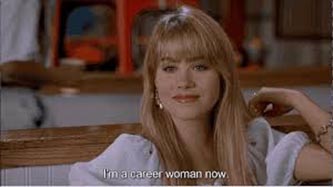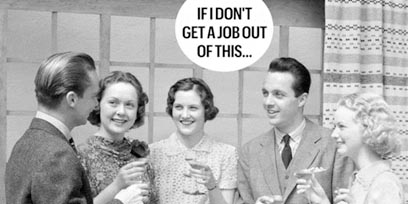“I wondered and I prayed and I Googled.”
― Jennifer Lynn Barnes, Enthralled: Paranormal Diversions

With Google being man’s modern God, the social media generation (generation Z) can attest to the fact that we have won the lottery with regards to quick and easy state of web communication since the halcyon days of encyclopedias and dial up internet have drawn to a state of obsoletion. In recent light of the controversial data protection issues Facebook has been caught in, it’s evident the role of social media and digitization plays a role in our lives.
Our world is a communication tsunami.
The unintended consequences of our digital culture have created ricochets of powerful opportunities to be splayed across the world destined to land in the hands of those who are actively utilizing social media to their advantage. Now more than ever, the ethos of collaboration and integration rings loudly in the ears of many. The world is buzzing with hives of connectivity and interaction where the courageous hunt for a great link to your desired industry is considered great social and possibly professional collateral. The flurry of the digital space has our attention spans in a tight fist and our mindsets in flitting from one tweet/notification/post to the next. The notion that social media is now a towering, formidable giant of the digital era proves true.
Unless you are taking shelter under a rather large rock in a remote area, anyone and everyone has a social media footprint. Students are now able to strategize unique ways to transform their social footprint into an adequate springboard to land them in exciting career paths.
There are three things that make s
ocial media what it is – engagement, communication and collaboration. The digital landscape of media in the social realm is quite fascinating because what once used to be the archaic times of handling heavy hardbacks and flipping through encyclopedia pages has now become virtually obsolete. Social media is now today’s golden rocket fuel for sharing content to the hungry masses. The energy used to flip through giant hardbacks is now expended through swiping tablets, clicking mouse-pads or speaking to devices named Alexa.
In the last 500 years, there are only four periods of time where the transformation of media were considered a “revolution”. The digitization of media is one – magazines, books, movies, music, publications (e.g. CV’s) are now occupying 1/10000th of the physical space than they did before. The fundamental concepts of engagement, communication, collaboration have been the precept of web communication from the beginning of time. The platforms utilized and the form of presentation of information in the social media landscape are the known variables.
To some extent, I believe these three concepts play into the psychology of the everyday consumer. As people we desire community – the coming together in unity – community. No one likes to be alone. The feeling of ca
maraderie connecting the average being to the next which allows for connections and links between people is the binding glue. In this same manner, social media is an example of such but on a heightened scale. It encapsulates a web of communities, leaning out to one another where it’s connectivity is sourced from the ideas and conversations of it’s members.
So we’ve got the endless twitter feuds, some mind-grappling thought provoking nonsensical Instagram memes that may or may possibly not be your catch phrase for the next 2 weeks to the occasional snaps from your friends party last night. I haven’t even mentioned the likes of Facebook, Pinterest and Tumblr (my favourite). Social media – love it or hate it, our world has seen its share of the impact media can have and with 2.46 billion social media users on the globe in this present day, that’s a whole lot of social footprints we’ve amassed as a people. At a time where social media is arguably playing such a revered role in areas of communication and business development, Linkedin has managed to score gold when it comes to building yourself up in the direction of one’s career. Linkedin may not be the most popular among its fellow companions such as Facebook and Twitter nevertheless the pivotal role it has played in networking is hard to argue with it.
Five Reasons why you should use Linkedin

Standard CV vs Professional Online Presence – Its out with the old and in with the new
A profile on Linkedin will generally rank higher than a Google search. Recruiting/prospective employers will MOST DEFINITELY google you hence it’s imperative to create a good first impression. Linkedin is the largest online platform where anyone with a phone/laptop etc can create an online resume for free in a matter of seconds. Gone are the days of paper CV’s and heaps of collated sheets with paragraphs for days restricted to a filing cabinet. The days of following the traditional “one page only” rule for a resume are now obsolete proving that professional online networking platforms such as Linkedin employ a fresh and novel narrative to the concept of recruiting/hiring employees. Linkedin employs the usage of the digital world which renders the debate about size irrelevant. How cool is that?
LinkedIn is the world’s biggest global networking arena! The digital giant has managed to dip its tentacles into the world of career development and job opportunities. Recruiting and hiring managers view Linkedin as a valuable tool to pick out the candidates they feel are well suited for the position. Forget Facebook friends, employers are now looking at the number of Linkedin contacts you have. With such a powerful stance in networking and career development, all students should take advantage of this booming platform.
You have the power to write your professional story – pick up your pen (or cursor rather) and start!
- Stand out, sell yourself, engage with posts, curate your content. Linkedin, to a certain degree, is about a moderate amount of ethical self-promotion. Use this platform to demonstrate how the skills you have acquired have enabled to envision yourself. When everyone looks exactly the same, you become indistinguishable and then you’re really at risk of being replaced by someone with, say, equivalent experience and some personality. Who you are as a person is as important to landing the work as your hard earned credentials, so increase your prospects by injecting personality into that bio – Kelly Hoey
- The skills section is a key element of a Linkedin profile where students can list the skills they have accrued and are currently developing. Here, the endorsement of skills can increase the validation of said skills
- Show your interests, make your brand uniquely you – portray what would make you “employable”. Do you have a blog space? Are you creating content through media and film? Are you a public speaker? Do you have any causes that you are passionate about? If so, then that’s your chance to market those skills and sell yourself.
- A great headline is a great head start – be bold but not corny. Avoid using cheesy colloquialisms which ultimately squander your chance to create a lasting first impression but be prepared to show some zeal. You’ve started by using Linkedin, push yourself out of the box with a great introduction of yourself. This is akin to giving your mentor/future boss a strong handshake, good eye contact and a smile – it can’t start better than that, can it?
- Any projects that you are involved in, writing grant proposals, scholarships/awards, certificates, organisations you’ve held office in/joined, placements/internships you’ve has the opportunity to experience and any volunteering groups/campaigns you’re a part of. https://www.kent.ac.uk/employabilitypoints/what-is-ep.html. University of Kent
- Tailor your profile to roughly match your goal/dream job.
You are your professional brand
- As a result of the social media giant in today’s society each and every one of us are consumers – we are constantly consuming information and ideas. In the same way, no matter which area of field you are planning to delve into – the STEM field, culinary art, business etc you are your own brand. It’s important to carry such mindset and work towards building a “likeable face” to push in the forefront.
- “I wasn’t pretty, but as my mother once said, prettiness wasn’t my profession.” Professionalism is key and it exemplifies the awareness of appreciating that this specific online platform is professional – No selfies, show that you are ready to work and that you can be considered “employable”.
- Attending conferences, seminars show that you are taking the time to engage with and further expand your network opportunities. Reach out to an established figure in your desired field/career path for a meeting to chat about their experience
Make your employers job easy…. possibly make him smile too
–“One of the most rewarding parts of using LinkedIn is stumbling across other people’s hidden gems of skills and experiences and seeing a more holistic picture of who they are as individuals.”
It’s not just about what you know but who you know

- “Don’t necessarily keep your profile exclusive to your career. Everyone has potential with people they know.
- Connections with industries/companies of interest are the golden key. Your potential job offer, internship, placement could very well be situated in the lap of a future connection. Connections with alumni is a great tool for searching for potential associates that are alongside your career path.
Be active – just like a muscle, keep moving it and it will be more likely to grow and adapt
- “Have regular updates on your profile. Think of it like Twitter in that sense. Your activity updates are like a beacon of flashing information disseminated out across your network; – as it’s not only your contacts that see this but their contacts too.”
- Research, research, research! Write down a list of companies that you can envision yourself working with. Read about what others have said about the organization and what the hiring process is like – have any previous alumni been there before?
- Remember to keep your social footprint professional! Professionalism is key
- Every day is a school day. Keep learning, keep growing. Your linkedin is akin to an extension of your professional development. Display your engagement in various activities e.g. volunteering, e-courses and training courses that you are doing alongside your studies. As with any facet of life, stagnancy is the antithesis of an eager, zealous person who is willing to grow to new heights in their respective field. Extend your social footprint to creating a canvas to a display your skill repertoire.
- The “magic bean” of success is non-existent – time and active engagement will bring to fruition the fruits of your labour.
Linkedin is a powerful multi-purpose tool. It is a job board, a learning resource, portfolio, research device, professional forum to connect, branding/marketing tool, reference sheet and much more however Linkedin is also an underutilized resource – a small jewel, left alone in the corner concealed by the likes of Facebook and Instagram – the big tycoons of social media platform. I encourage all student students to jump to your devices and join Linkedin.
When used strategically, social media can be a powerful form of research, professional development. It is evident that social media is continuing to thrive and with platforms like Linkedin, students can prove to be adaptable, professional and most importantly employable in the social global community of Linkedin.
“If you are not in the process of becoming the person you want to be, you are automatically engaged in becoming the person you don’t want to be.”― Dale Carnegie
